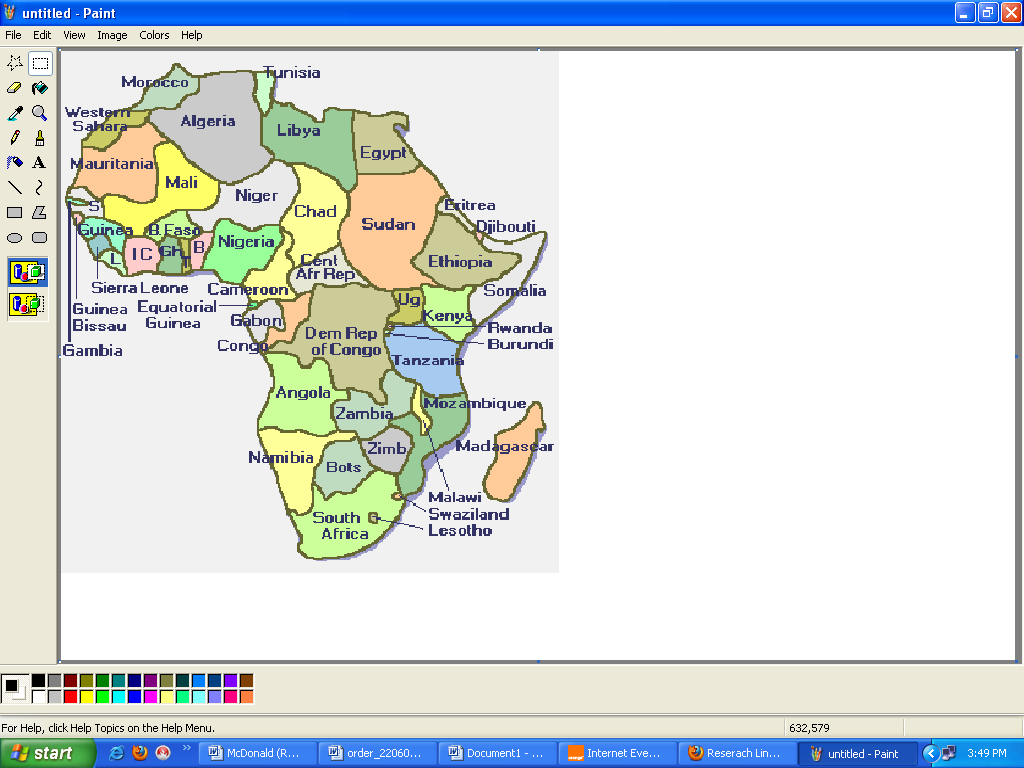As the world evolves, more and more conglomerates are going global investing in regions that have not been invested in, colonizing and monopolizing industries and clienteles that have previously not been tapped. McDonald’s Corporation has grown to be world’s largest chain of fast food restaurants, with an estimated clientele of about 60 million customers every day (Thomas, 1995). Throughout the years, McDonald’s chain of restaurants has become one of the most famous as well as one of the most loved brands in the world, especially so in the hamburger, cheeseburgers, and chicken products. It has over this period moved beyond the walls of its existing stores in the same trade, offices as well as roasting and production plants throughout the world (Schmetterer, 2003). Progressively more, people all over the world where the stores are located have come into contact with, experienced or at least heard about the brand of McDonald’s. This is highly attributed to the company’s renewed quest for offering fresh quality fast foods that is different from the idea of other fast foods like the one offered by other restaurants (Rubinfeld and Hemingway, 2005). Most of McDonald’s restaurants are operated either through the use of franchises, affiliates, or the worldwide corporation itself. The revenues and the income of the company are mainly resourced from rent charges, royalty and souvenirs as well as fees that have been remunerated to the franchises.
McDonald’s already has limited business in South Africa as well as some few countries in the northern parts of the continent. In Africa, the greatest competition to the activities and business ventures of the restaurant chain as well as the best countries for investment would come from restaurants that are located in Egypt (with a proposed McDonald’s 10 restaurants), Ghana (with a proposed 8 McDonald’s restaurants), Nigeria (with a proposed McDonald’s 8 restaurants), Kenya (with a proposed McDonald’s 6 restaurants), Algeria (with a proposed McDonald’s 5 restaurants), Cameroon (with a proposed McDonald’s 5 restaurants), Mozambique (with a proposed McDonald’s 4 restaurants), and morocco (with a proposed McDonald’s 2 restaurants). This is information that is based on the current number of restaurants that are available in the capital cities of the various countries, adequately offering competition to the restaurant franchises (Rubinfeld and Hemingway, 2005). These are countries that have had a taste of fast food franchises and as thus, have a ready customer-base that understands what to expect and have ready resources.
The biggest competition in the fast food restaurant industry is Nando’s, a casual dining restaurant group with its headquarters in South Africa and incorporating a Portuguese/Mozambican theme (Spector, 2005). The restaurant chain operates in about 26 countries throughout the African continent, specializing in the very product that has made McDonald’s an international giant: Chicken and chicken-related dishes (Thomas, 2005). Steers, a “quick-service fast food restaurant franchise is another big competitor in the industry, with its core “products including the sale of a range of flame-grilled beef and chicken hamburgers, served with soft drinks and French fries” (Spector, 2005). With the “It’s That Good!” (Schmetterer, 2003) slogan, the company, which also has its headquarters in South Africa, has made a name for itself in the fast food industry by creating a strong rapport with its customer base as well as ensuring quality products. Thus, in order to gain competitive advantage over these major corporations in the African fast food industry, McDonald’s has to offer food services that are of high quality, increasing the customer appeal by serving dishes that are of an African culture (Prahalad, 2004). This is because customers require products which not only meet the particular requirements that they have but also are satisfactory in terms of the length of working lifetime they have left, safety in their usage as well as the pride that comes from the ownership of these materials (Pendergrast, 1999). When it comes to consumer goods, like food and drinks, customer satisfaction is judged in terms of the kind of service the customer gets while in the establishment, the atmosphere within the serving area, as well as the quality of product they end up getting. This quality of service extends all the way into the conceptual design of the business, from the ordering of the services to the time they are delivered and distributed/consumed.
Internationally, McDonald’s corporation is poised for significant growth. Though it was once viewed as a United States company that operated internationally, it has now truly been recognized as a global company. However, because of its dominant United States culture in its foundation, US market incentives, activities, trends and ideas are still an important factor in how decisions are made. The future on opportunity of this company mainly is reliant mainly on the expansion and sustained profitability of the reliant international market. Most of the company’s international market business units, which are defined by the region in which they operate, may comparatively not be as profitable in their operations or in the achievement of the strategic goals that have been set by the management team. The performance of the international corporation is thus dependent on the performance of the various franchises that have been set up in the region. Additionally, the success of the international stores is dependent on different factors as compared to those that are present in the United States.
References
Pendergrast, M. (1999). McDonald’s: The Romantic Period, Basic Books. New York, McGraw-Hill/Irwin Publishing Company.
Prahalad, C. K. (2004). The Future Competition: Co-Creating Unique Value with Customers. London: Harvard Business School Press.
Rubinfeld, A. & Hemingway, C. (2005). Built for Growth. San Francisco, SF: Wharton School Publishing.
Schmetterer, B. (2003). Leap: A Revolution in Creative Business Strategy. New York, NY: John Wiley and Sons.
Spector, R (2005). Category Killers: The Retail Revolution and Its Impact on Consumer. London: Harvard Business School Press.
Thomas, R. (1995). New Product Success Stories: Lessons from Leading Innovators. London: John Wiley and Sons
Appendix 1. Africa

